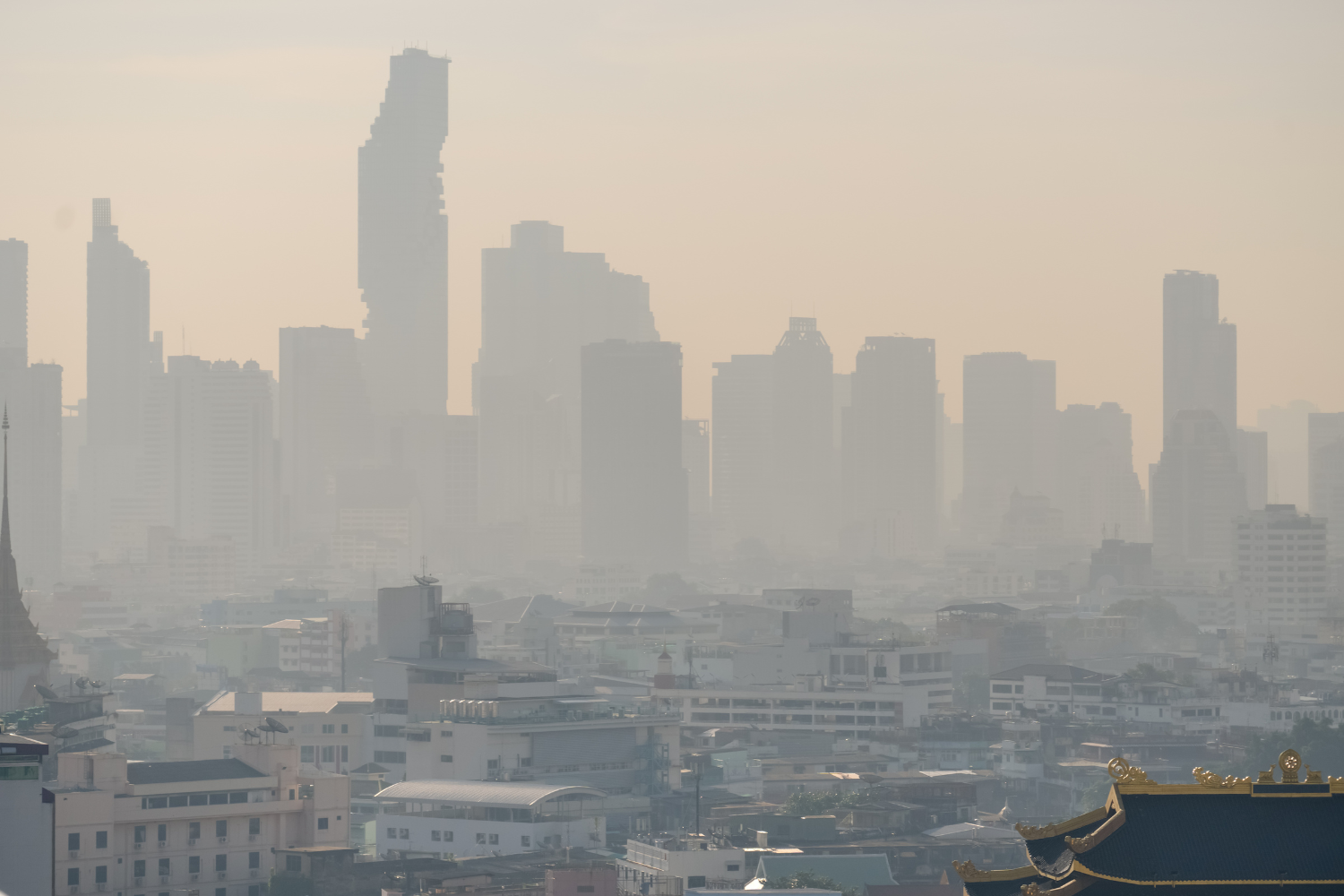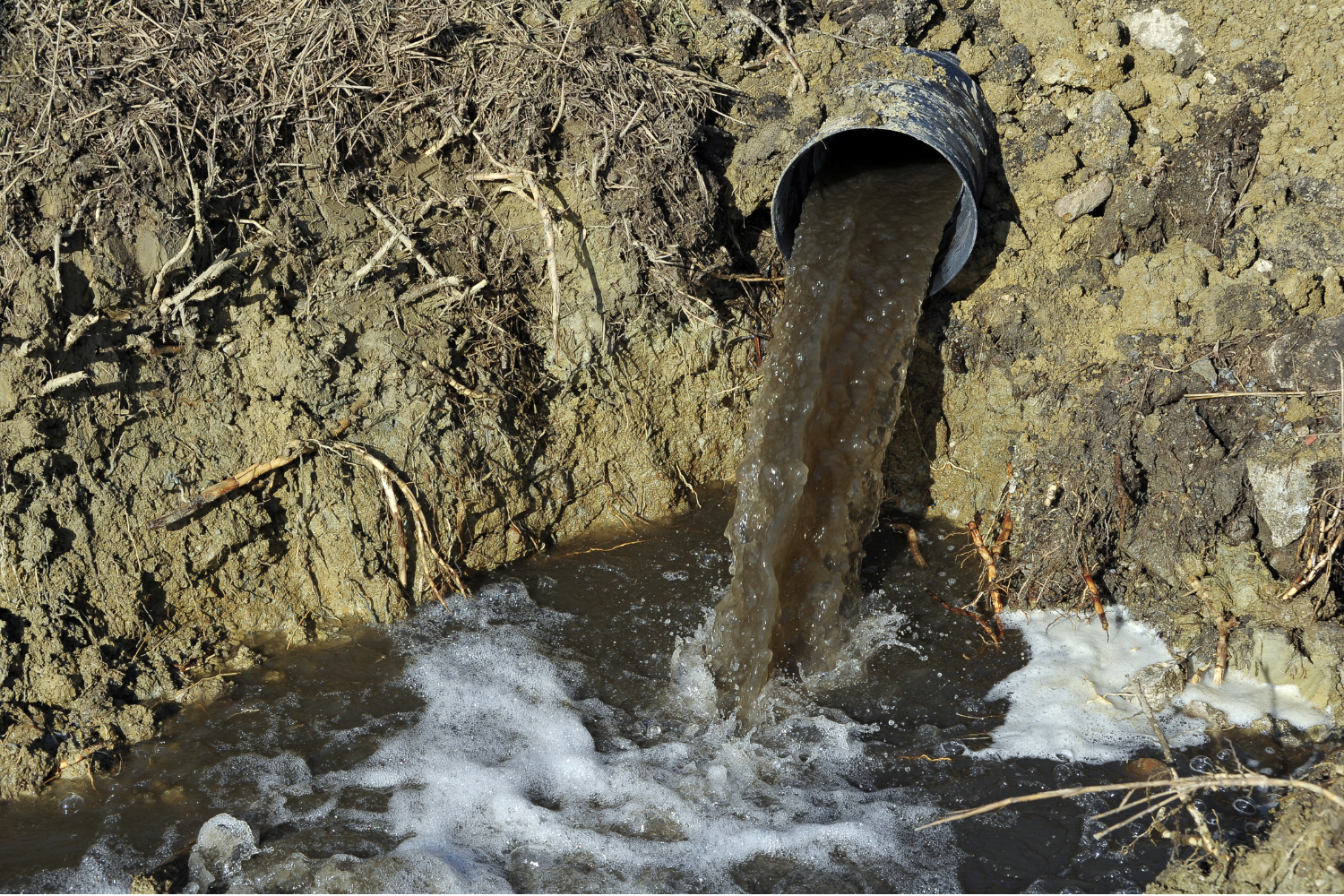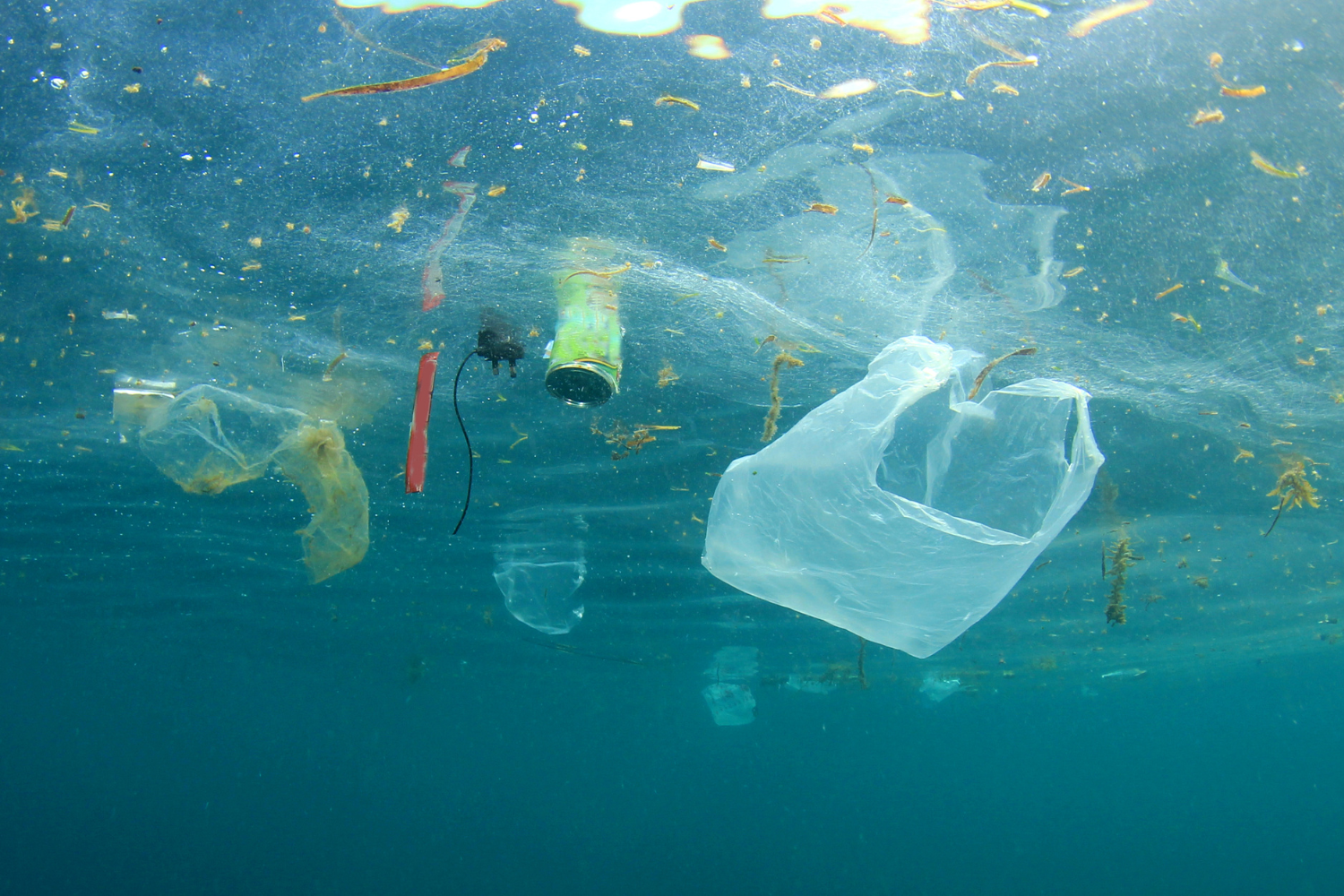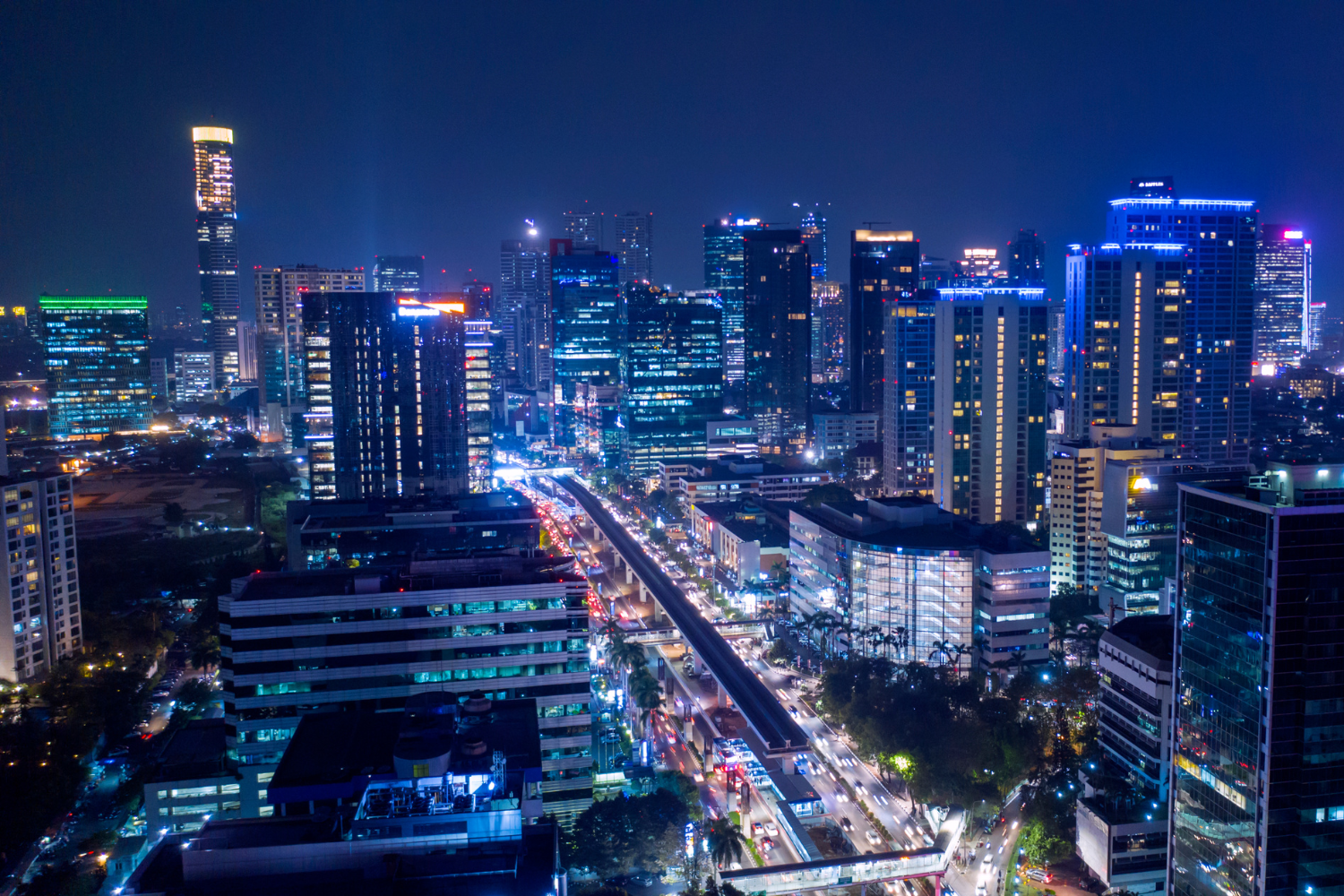
Human activities have led to the introduction of countless harmful contaminants into the environment. Air, water, and soil pollution damage human and ecosystem health and are amplified by population growth and rising per capita consumption, as well as unethical corporate behavior.
As with other environmental issues, disadvantaged and marginalized communities are disproportionately exposed to harmful pollutants, both here in the United States and around the world.
Air pollution
Human activities that burn fossil fuels and biomass, including transportation, cooking and heating, power generation, waste incineration, and industry, lead to the release of dangerous air pollutants, including particulate matter (PM), carbon monoxide (CO), ozone (O3), nitrogen dioxide (NO2), and sulphur dioxide (SO2).

99%
Almost everyone on Earth, 99 percent of the global population, breathes air that exceeds the World Health Organization (WHO) safety limits, with low- and middle-income countries suffering from the highest exposures.
7 million
According to WHO, the combined effects of ambient and household air pollution cause an estimated 7 million premature deaths every year.
Agriculture and sewage
Human waste, as well as runoff from farms containing fertilizer, pesticides, and animal waste, are the main causes of water pollution. These can cause toxic algal blooms and introduce dangerous pathogens and chemicals into the environment. According to the UN, 90% of sewage in developing countries is discharged untreated directly into water bodies, leading to a very high incidence of waterborne disease—diarrhea remains a leading cause of death for children under five globally.

1/9
One in nine people in the world do not have access to safe, sanitized drinking water.
5x
Livestock in the United States produce nearly 1.4 billion tons of manure annually, equivalent to five times the waste of the entire U.S. population.
Plastic pollution
Industrialization and our booming demand for products has led to a surge in plastic production and waste. In 1950, the world produced just two million tons of plastic. Today, we produce over 450 million tons annually. Only a very small percentage of this is recycled, which means a significant amount of plastic trash pollutes terrestrial and aquatic environments, where it can remain for hundreds of years.
Plastic waste can kill wildlife through entanglement and ingestion, while very small plastic particles, called micro- and nanoplastics, can even enter human bodies, with potentially adverse health consequences.

+116%
In just the last two decades, plastic production has more than doubled, from around 213 million tons in 2000 to 460 million tons in 2019.
19-23 million
An estimated 19-23 million tons of plastic waste enter aquatic ecosystems, including lakes, rivers, and seas, every year.
Heavy metals and toxic chemicals
Industry is continuously developing new chemicals and compounds, many of which are subsequently shown to have serious negative effects on human health and the environment. Famous examples of highly harmful substances that have since been phased out include the pesticide DDT (dichlorodiphenyltrichloroethane) and leaded gasoline. Another example is PCBs, or polychlorinated biphenyls, which were banned in the U.S. in 1976 and internationally in 2001. Despite this, because PCBs don’t break down easily—like DDT, they are a type of persistent organic pollutant or ‘POP’—they remain in the environment in alarming concentrations, and have been linked to the rapid decline of orca populations.
Unfortunately, while some POPs aka “forever chemicals” have been banned, many new ones have since been added, such as PFAS (per- and polyfluorinated substances), widely used to make consumer goods “non-stick” or water- and stain-resistant. PFAS have been shown to accumulate in people’s bodies and have been linked to cancer and other serious diseases.

Agricultural and industrial activities can also lead to soil pollution. Contaminated soil can directly and indirectly impact human health, such as through the consumption of food grown in soil containing dangerous pollutants. Soil pollution is estimated to contribute to more than 500,000 premature deaths globally per year.
Noise and light
Human activities scaled up to our population of 8 billion and counting also produce enormous amounts of noise and light, the effects of which have only recently begun to be studied. Both noise and light pollution have been shown to disrupt the behavior of wild animals and to negatively impact wildlife and human health.

Building a healthier future
We must scale back our damaging activities that lead to the toxification of our environment. We need much tougher industry regulation, better waste disposal and processing systems, and a complete phase-out of fossil fuels and harmful chemicals. Ending over-consumption, such as of meat and of products containing plastic, and stabilizing our population at a more sustainable level, will also go a long way towards reducing pollution.
Relevant SDG Targets
By 2030, substantially reduce the number of deaths and illnesses from hazardous chemicals and air, water, and soil pollution and contamination
By 2030, achieve universal and equitable access to safe and affordable drinking water for all
By 2030, improve water quality by reducing pollution, eliminating dumping, and minimizing release of hazardous chemicals and materials, halving the proportion of untreated wastewater and substantially increasing recycling and safe reuse globally
By 2025, prevent and significantly reduce marine pollution of all kinds, in particular from land-based activities, including marine debris and nutrient pollution
Take urgent and significant action to reduce the degradation of natural habitats, halt the loss of biodiversity, and, by 2020, protect and prevent the extinction of threatened species
